Thrumpton Hall, Nottinghamshire: A treasure on the Trent
A surviving collection of personal letters sheds a fascinating light on 18th-century life in this fine Jacobean house. John Goodall examines the development of the building.

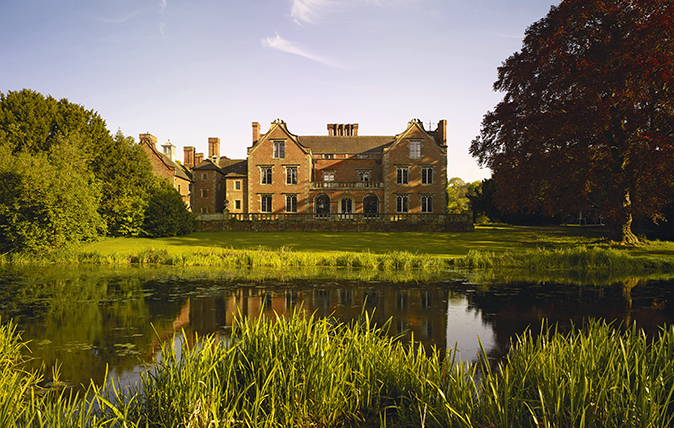
Thrumpton Hall stands about a mile from the towering chimneys of Ratcliffe-on-Soar Power Station and only a little further from the outskirts of Nottingham, yet its immediate setting above a former backwater of the River Trent feels completely removed from the industrial world. The building is first documented in the will of one Gervase Pigottt, dated January 24, 1617, where it is described as ‘my chief and principall howse by me in Thrompton aforesaid builded and inhabited’.
Pigott, who was born locally, but on the Derbyshire side of the Trent, had developed an interest in the manor of Thrumpton by stages from 1594. Its late-medieval owners, the Powtrells, were gradually ruined by their adherence to Catholicism and the recusancy fines that attended it. They finally sold up in 1609 for £200 and work to Pigott’s seat probably began immediately thereafter.
The new house was erected on a conventional H-shaped plan with a central hall bookended by cross ranges. It was constructed in brick and detailed in stone (with framed internal partitions, which have given rise to the misconception that the fabric incorporates the remains of an older building). The bones of this relatively modest Jacobean house survive intact, but have been cumulatively overlaid and adapted.
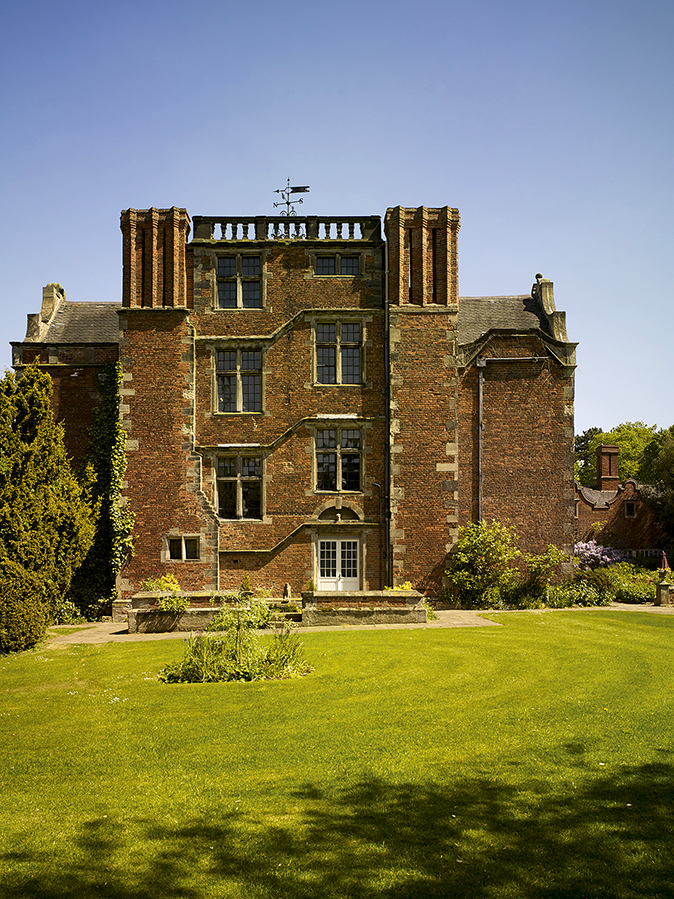
Pigott’s son, another Gervase, inherited as a minor in 1617 and supported Parliament in the Civil War. It is a surprise, therefore, that he was a friend of the antiquarian and Royalist Dr Robert Thoroton. In his The Antiquities of Nottinghamshire, published in 1677 (which was inspired, according to the preface, by a conversation at Thrumpton), Thoroton reports that Gervase ‘inclosed the Fields, and very much adorned the Seat, so that ’tis now as pleasant and convenient both within and without as can reasonably be wished’.
The work included the cosmetic enrichment of the exterior with ornamental gables and major internal changes. He possibly doubled up the central block to create an inner and outer hall at ground level (now the hall and library, the latter perhaps at a raised mezzanine level with a balcony overlooking the forecourt to the south).
More certainly, Gervase inserted a superb new staircase that rises the full height of the building. To accommodate this, the western cross range was completely reconfigured with staggered windows set across four bays and surmounted by a prospect tower. The arrangement is shown in an engraving made for Thoroton in 1676. Additionally, a new saloon was created on the first floor along with another magnificent panelled chamber, now the Oak Room.

It is possible to date these changes closely: Thoroton goes on to explain that Gervase convinced the celebrated herald William Dugdale, ‘in his visitation of this County, begun in 1662’, that he was descended from the Pigots of neighbouring Ratcliffe (where the power station now stands). In other words, that he was a native. Accordingly, Dugdale granted him new arms. These appear repeatedly in the carving on the main stair, which must, therefore, post-date the grant and pre-date Gervase’s death in 1669.
Exquisite houses, the beauty of Nature, and how to get the most from your life, straight to your inbox.
It is an added curiosity that the heraldic programme of the stair echoes that presented on the monument that Gervase commissioned for himself and his father in the parish church (and which Thoroton also illustrates). The latter stands on a base in the form of a tree, a motif perhaps suggestive of the Pigotts’ rooted connections with the locality.
Gervase’s son became deeply indebted and mortgaged the property to a London lawyer, John Emerton. In 1696, Emerton foreclosed on the debt and took possession of the estate. He rebuilt much of the village, where several houses bear a date of construction and his initials. Following Emerton’s death in 1745, Thrumpton was inherited by a nephew, John Wescomb Emerton. A minor at the time of his succession, he resided at Thrumpton for nearly 80 years until his death aged 88 in 1823.

John’s long occupancy is partly documented by a remarkable surviving correspondence with his brother Nicholas. Neatly written and reliably spelt, with no underlining, exclamation marks or touches of humour, the letters reinforce the impression of a cautious, educated and intelligent writer, who had a good eye for business, pursued his pleasures seriously and took delight chiefly in the affairs and company of his family.
He travelled abroad to France in 1771 with his wife, Helen (who died childless in 1780), but the journey was not happy. At Amiens, he particularly resented ‘some very rude behaviour… from a parcel of women and children… who followed us about town ridiculing our dress and shouting “Voilà les Anglois”’.
Most of the letters were written at Thrumpton, where life revolved around the events of the agricultural year and the perennial woes of the weather. Flooding was a particular local problem and necessitated the regular repair of the riverbanks. John fished, shot and kept spaniels. Every year, according to the season, he sent salmon and venison to his brother in Essex, gifts that were regularly spoilt in the process of delivery.

The practical complications of making visits – another recurrent theme – help explain why. There was besides a great deal of travel to London for business and Bath and Buxton for society and taking the waters, journeys sometimes attended by accidents. The problems of painting heraldry and a crest on his brother’s new phaeton reveals a shared knowledge of heraldry.
Regular reference is made to the subject of canal construction, in which both men speculated, and flax spinning, which was a seasonal cottage industry in Thrumpton. By contrast, there is little mention of politics or international affairs, although disturbances in Manchester, elections and the activities of the militias all receive mention. In April 1795, John believed it ‘very likely both Dutch and French will join in an attempt to invade us… Consider how alarming such an event must be to you and let me intreat you to remove your family to this place’.
John was a keen gardener and his correspondence makes reference to vines, apricots and peaches at Thrumpton. When his brother was involved in landscape improvements in 1796, he advised him to acquire ‘Mr Price’s Essay on the Picturesque’, and later gave instructions for the purchase of Robert Thornton’s ill-fated botanical work by volume. He played the guitar and spent considerable time discussing the design of the Aeolian harp in order to procure one in London for his niece.
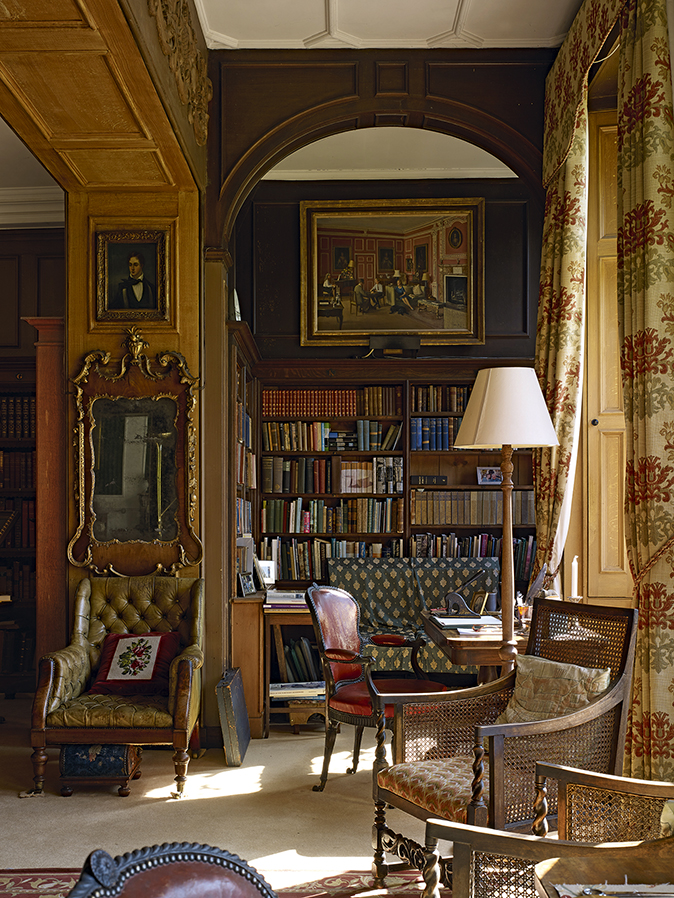
Unfortunately, John’s many alterations to the house and grounds are only incidentally mentioned. In 1785, however, work was under way to the hall and library on the ground floor. Probably at this time, the former became the new main entrance and the latter was provided with a projecting loggia.
At the same time, a walled court immediately to the south of the house was demolished and the surrounding landscape naturalised. When the antiquarian John Throsby described the house in 1791, the work was largely complete, although a garden building was under construction ‘which will command extensive and beautiful views of the circumadjacent country’.
Throsby was delighted by the landscape, but judged the house ‘rather small; but it has, I am informed, internal elegance and convenience. Had there been any pictures of note here I should have been happy in seeing them. I was there at a late hour, and had scarcely time to finish my drawing, or I should, however, have taken the liberty of asking leave to see the rooms’.
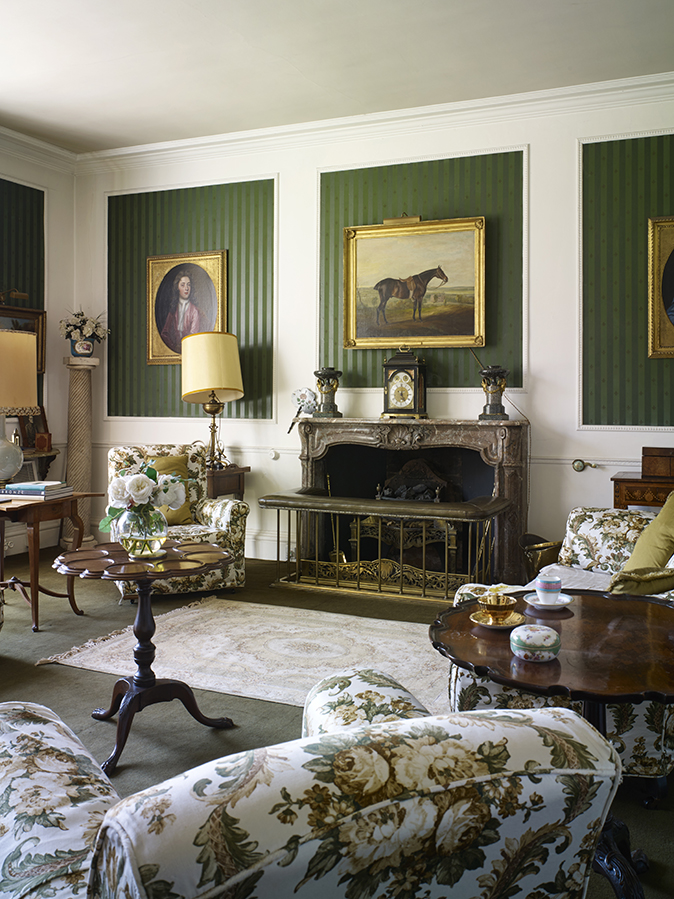
By the 1790s, there is a hint of hypochondria in John’s letters. ‘My stomach,’ he wrote on May 15, 1795, ‘has been very much out of order of late; the least deviation from my common way of living is sure to affect me, and give me a headache.’ There were bouts of self-pity, too. When he was encouraged to furnish a room he retorted, in June 1796, that ‘deserted, as I seem to be by my friends, I have scarcely use for half the rooms I have already fitted up; and have now a room, which has had a new bed and furniture in it three years without having been once used – For this reason I think it likely that the room will not be fitted up in my life-time’.
Nevertheless, just a few month later, on November 23, 1796, he confessed that ‘to pass away the time I began some alterations, which had been in my mind a great while… tho’ I have made my house more convenient and comfortable in the opinion of my friends as well as in my own, yet the alterations I have made have not been so agreeable to my servants; who have shown so much ill humour and behaved so ill on this occasion, that I am resolved to part with my housekeeper’.
Frustratingly, the nature of the works is not clear. The servants continued to cause trouble: ‘their behaviour,’ he wrote on January 9, 1797, ‘is too bad to put up with – every satisfaction and comfort which I can receive from this place is destroyed; and I am persuaded that I shall be obliged in the end to seek another abode—I shall not be in a hurry to part, for I have not resolution enough to engage a fresh set, and there is greater probability of their sending me away than of me getting rid of them’.
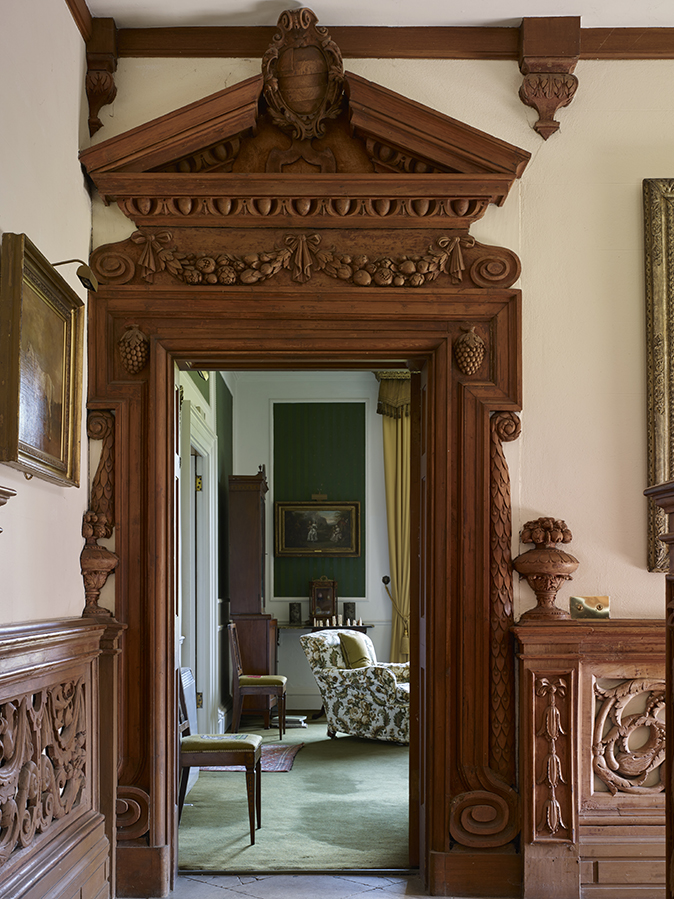
Such was his despondency that, in July, he complained: ‘I have a party to dine with me on Thursday, I wish it was over. I live alone, and am melancholy; I see company and am ill.’ It is hard to believe that he remained in the house for another 26 years.
The heir to the estate, John Emerton Wescomb, initiated another important round of changes, all undertaken in a Tudor idiom. A plan of 1831, possibly by the architect John Shaw, suggests that he rebuilt the service court to the east of the house, enclosed the library loggia and reconfigured the entrance front. A new gatehouse was constructed at the entrance of the drive. Such was his concern for the character of the park that, when the Midland Counties Railway Company constructed a line through it, he obliged it to create tunnels with folly-like, castellated entrances.
At Wescomb’s death in 1838, the estate was divided between three nieces. Lucy, the eldest, married into the Byron family and inherited Thrumpton, where she lived in state. A signed plan by the Nottingham architect R. C. Sutton shows that the house was modernised on her behalf before 1868.
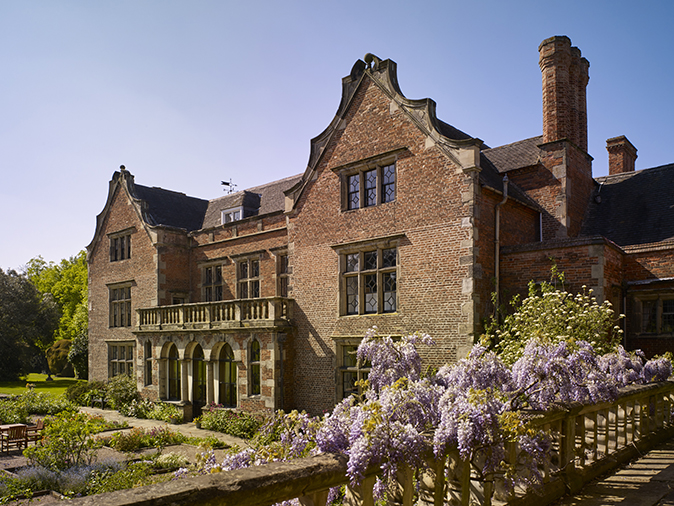
After her death in 1914, the estate was reassembled by happy genealogical accident and passed to the 10th Lord Byron, who was both squire and vicar of Thrumpton. In the 1920s, he electrified the whole village, including the schools, the church and 50 cottages. His death in 1949 was followed by a sale of contents in 1950 and the opening of the house to the public by the heir to the estate, George Seymour, the following year.
It was inherited in 1994 by his daughter, the writer Miranda Seymour. She wrote an acclaimed memoir of her father, In My Father's House: Elegy for an Obsessive Love (2008). This describes his obsession with the house and, in a narrative complicated by his snobbery, gay affairs and a love of biking, its personal costs for the entire family. She shared the house with her mother, who died earlier this year. Thrumpton is a popular and successful commercial venue, but it remains a much-loved family house as well.
Visit www.thrumptonhall.com for further information

Cumberland Lodge: The 17th century marvel 'a thousand times more agreeable than Blenheim'
This year, a remarkable educational foundation in a spectacular parkland setting celebrates its 70th anniversary. John Goodall considers the history
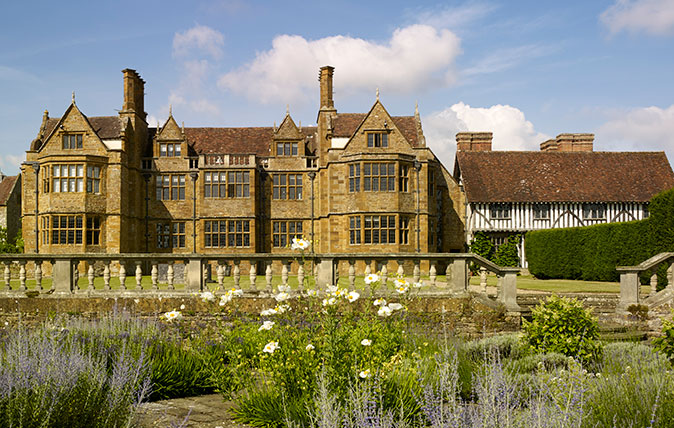
Ashby St Legers: A spectacular house where the Gunpowder Plot was hatched
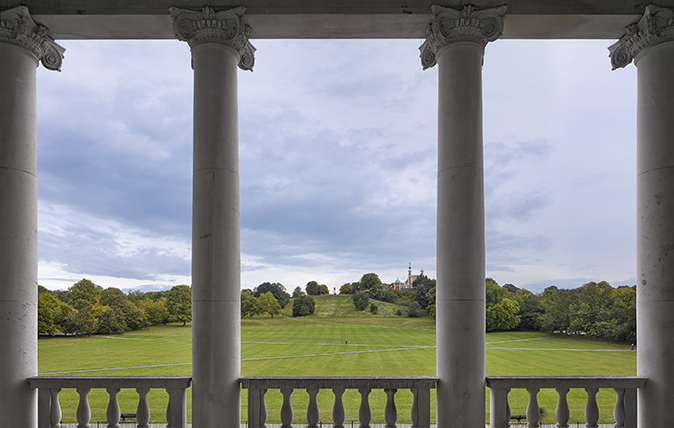
The Queen’s House, Greenwich: A royal villa of global significance housing a world-class art collection
In preparation for its 400th anniversary last year, the Queen’s House underwent a major refurbishment and re-hang. Harry Mount looks

John spent his childhood in Kenya, Germany, India and Yorkshire before joining Country Life in 2007, via the University of Durham. Known for his irrepressible love of castles and the Frozen soundtrack, and a laugh that lights up the lives of those around him, John also moonlights as a walking encyclopedia and is the author of several books.